Abstract
1. The effects of electrical stimulation of the distal ends of cut preganglionic cervical sympathetic trunks and cut sinus nerves on carotid body total blood flow, local blood flow and tissue PO2 (Pt,O2) were studied in anaesthetized cats. 2. Sympathetic stimulation caused reductions, often marked, of the total blood flow through the carotid body, yet did not influence local flow or Pt,O2 recorded by electrodes whose tips lay in deep locations within the carotid body. Intraglomeral electrodes did respond to reductions of perfusion pressure and to perfusions of the carotid body with saline solutions. 3. Values of Pt,O2 recorded from superficial tissues of the carotid body were higher than those from deeper locations and were increased by blowing oxygen over the surface of the organ. In these locations, sympathetic stimulation increased Pt,O2. 4. An increase in the frequency of sinus nerve chemosensory discharges during sympathetic stimulation was obtained in the presence of an unchanged Pt,O2 recorded from deep glomeral locations. 5. Stimulation of the distal end of the sinus nerve increased the total blood flow through the carotid body but did not affect local flow or Pt,O2 recorded from deep glomeral locations. 6. It is concluded that autonomic nerves supplying the carotid body mainly influence arteriovenous anastomotic and/or other shunt vessels, with little control being exerted on vessels regulating the flow through the capillary network of the specific tissue. This investigation also indicates that the flow in the capillary network of the specific tissue is a small proportion of the total flow. Support is given to the view that autonomic nerves can influence chemoreceptor activity by non-vascular mechanisms.
Full text
PDF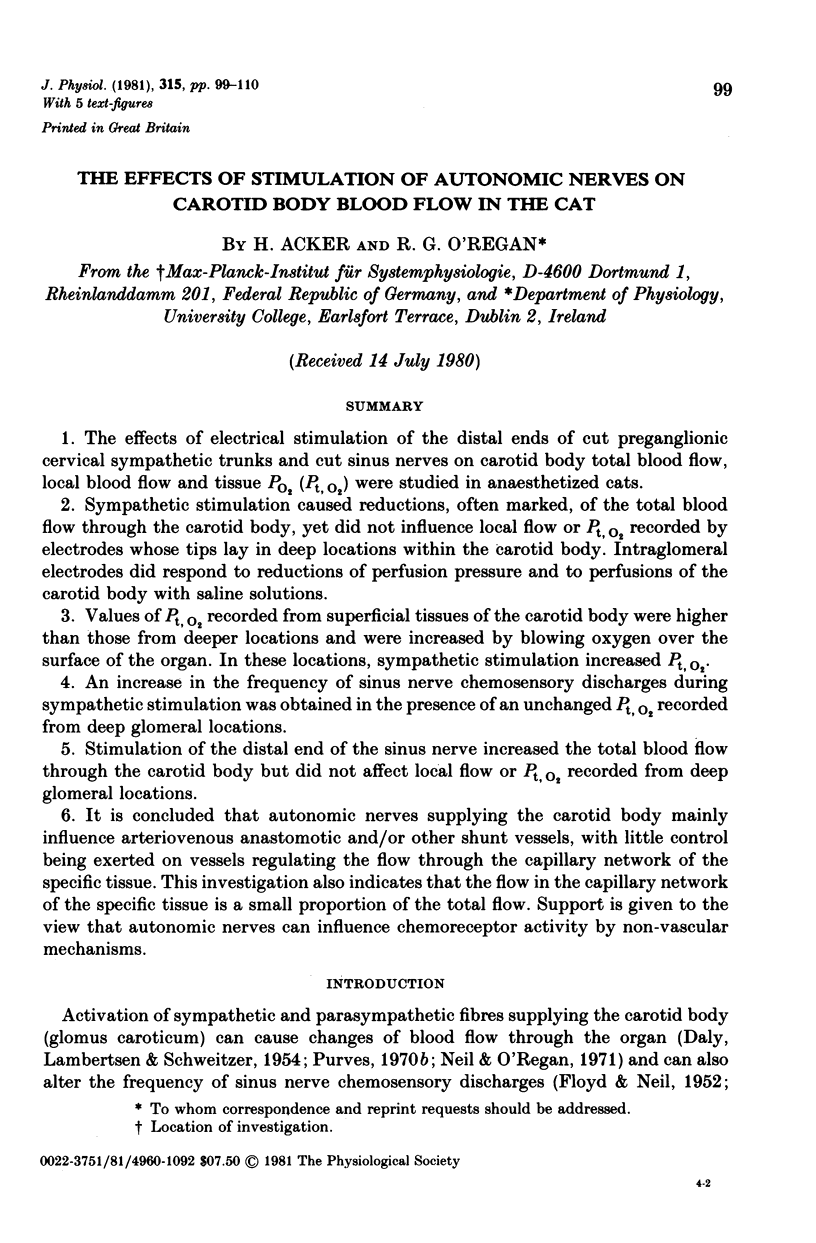
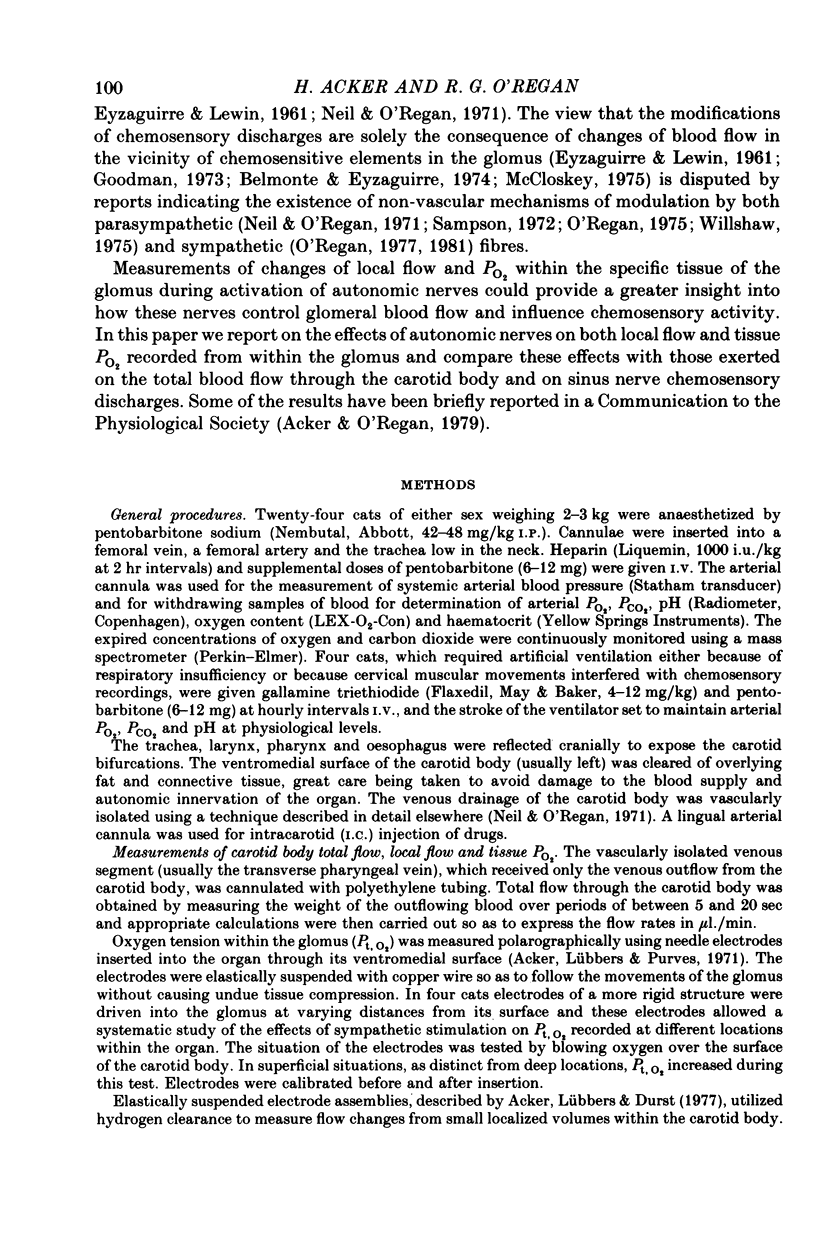
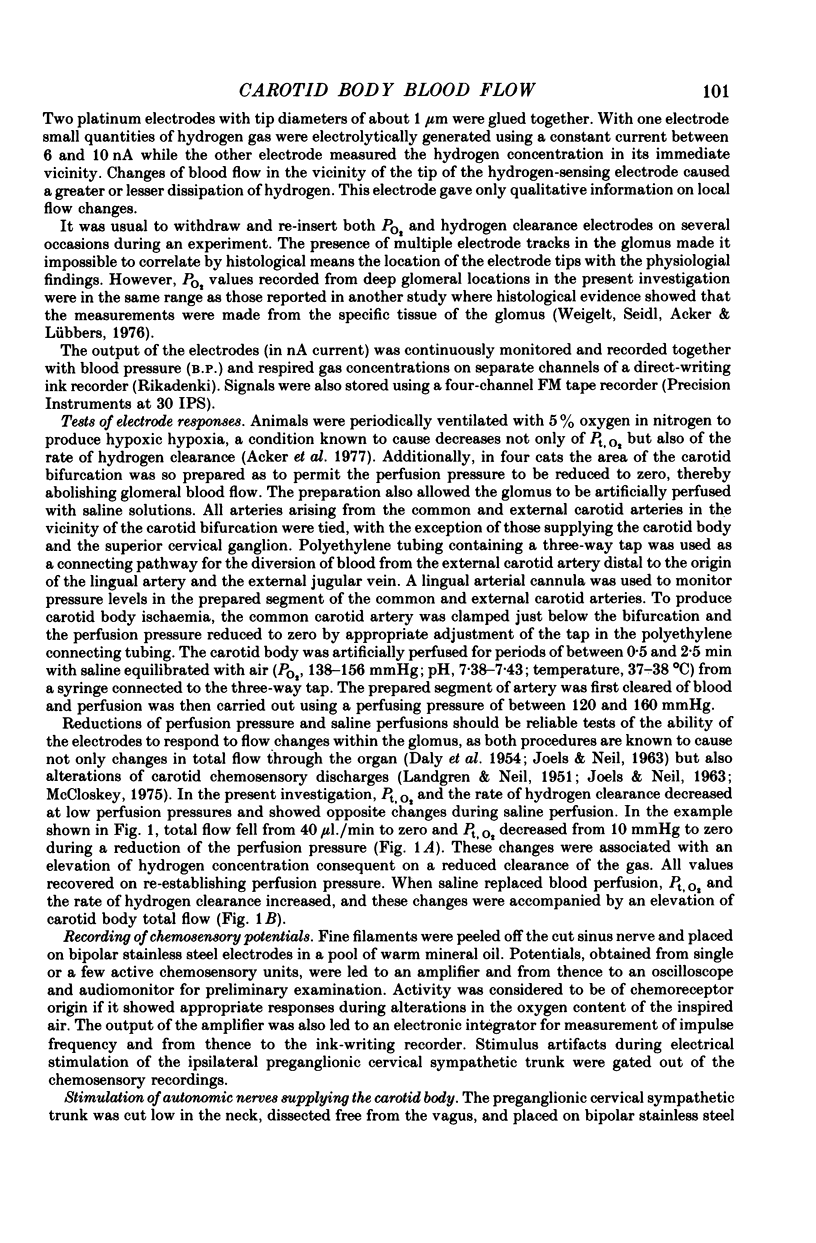
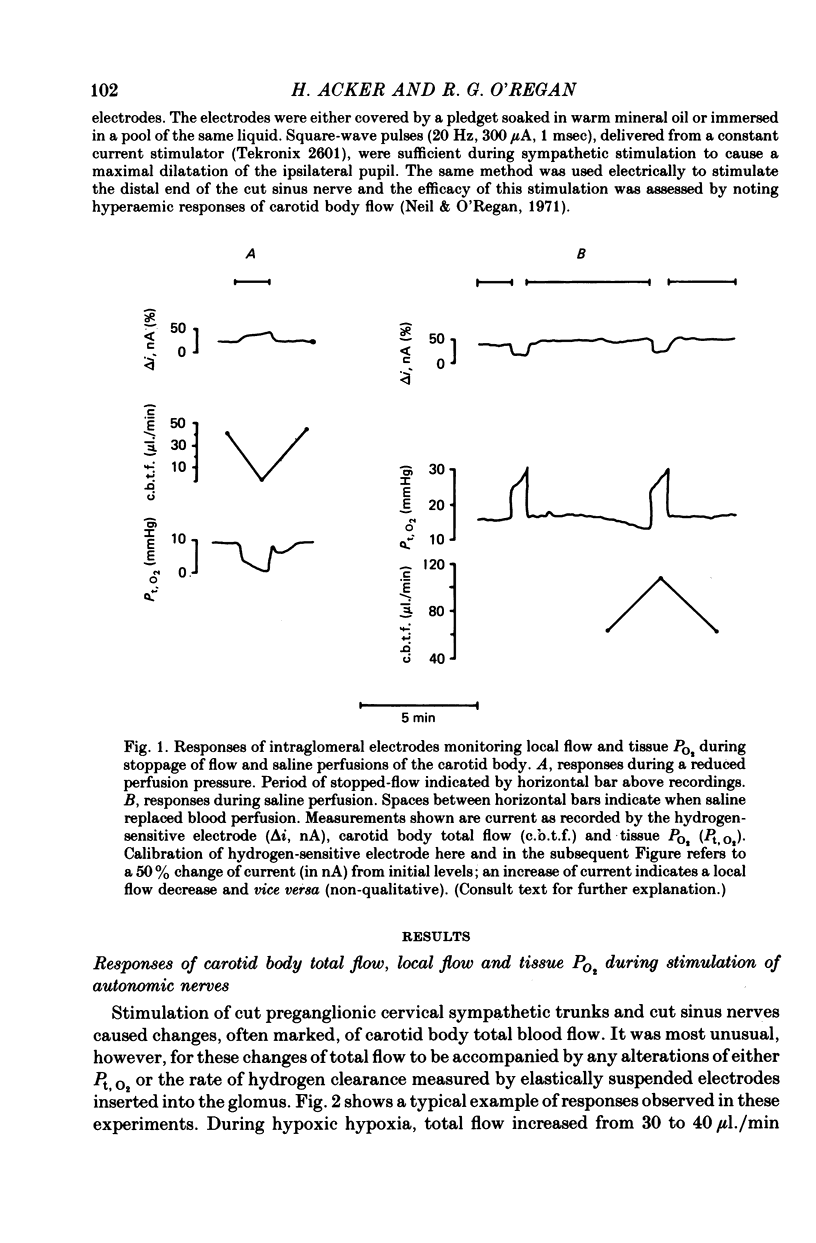
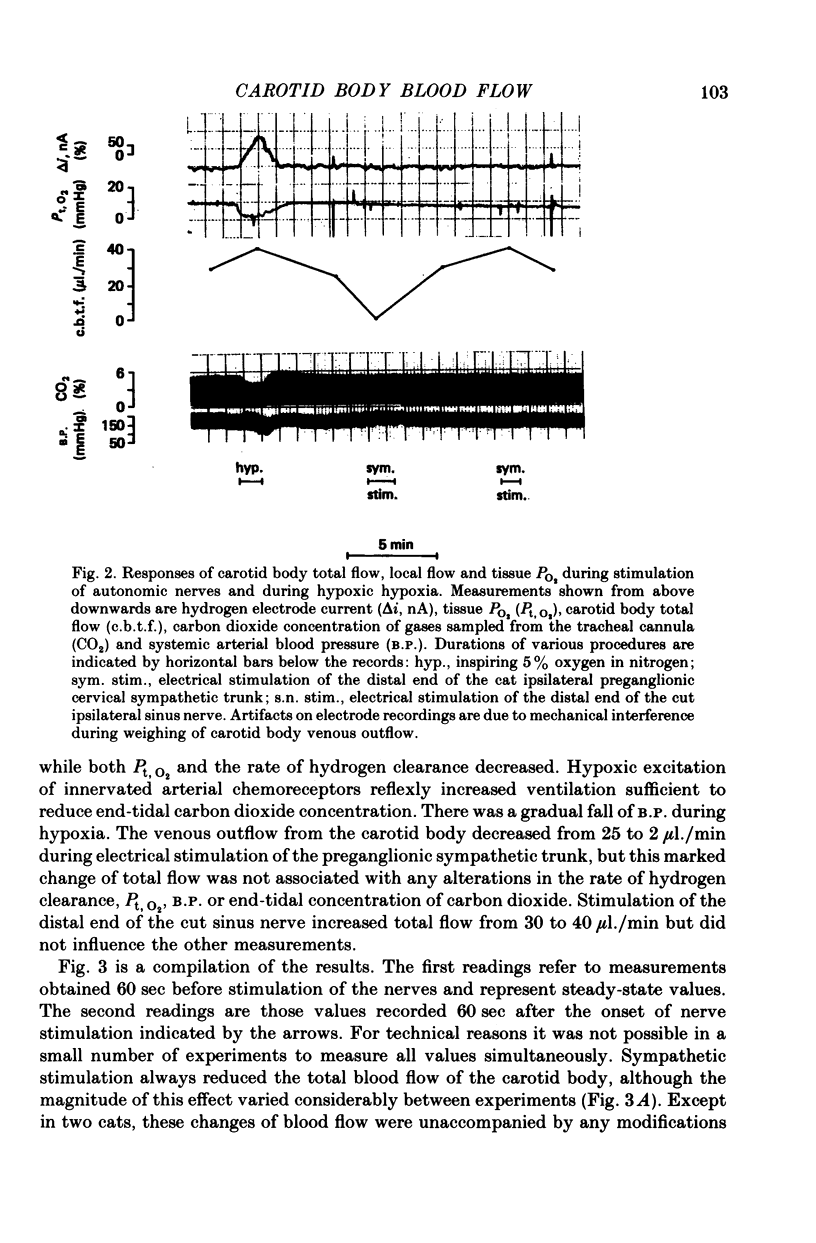
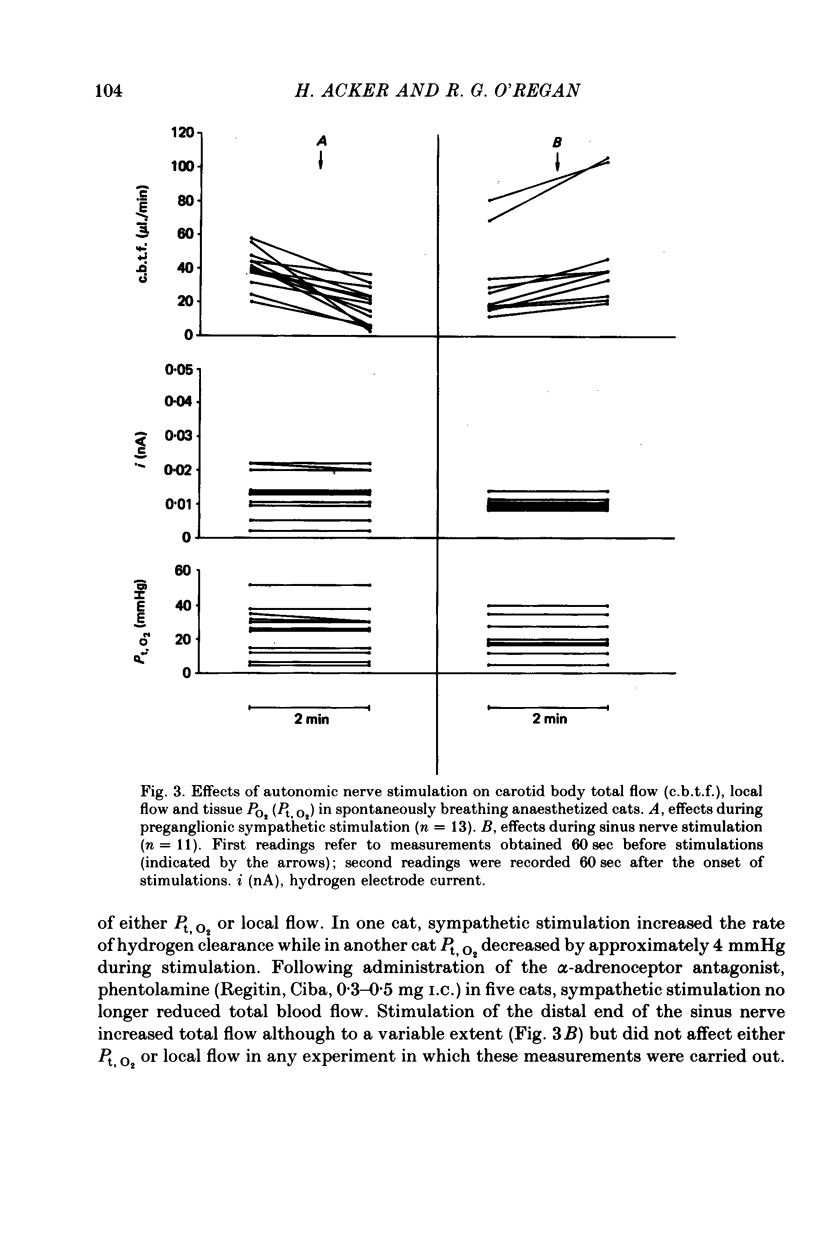
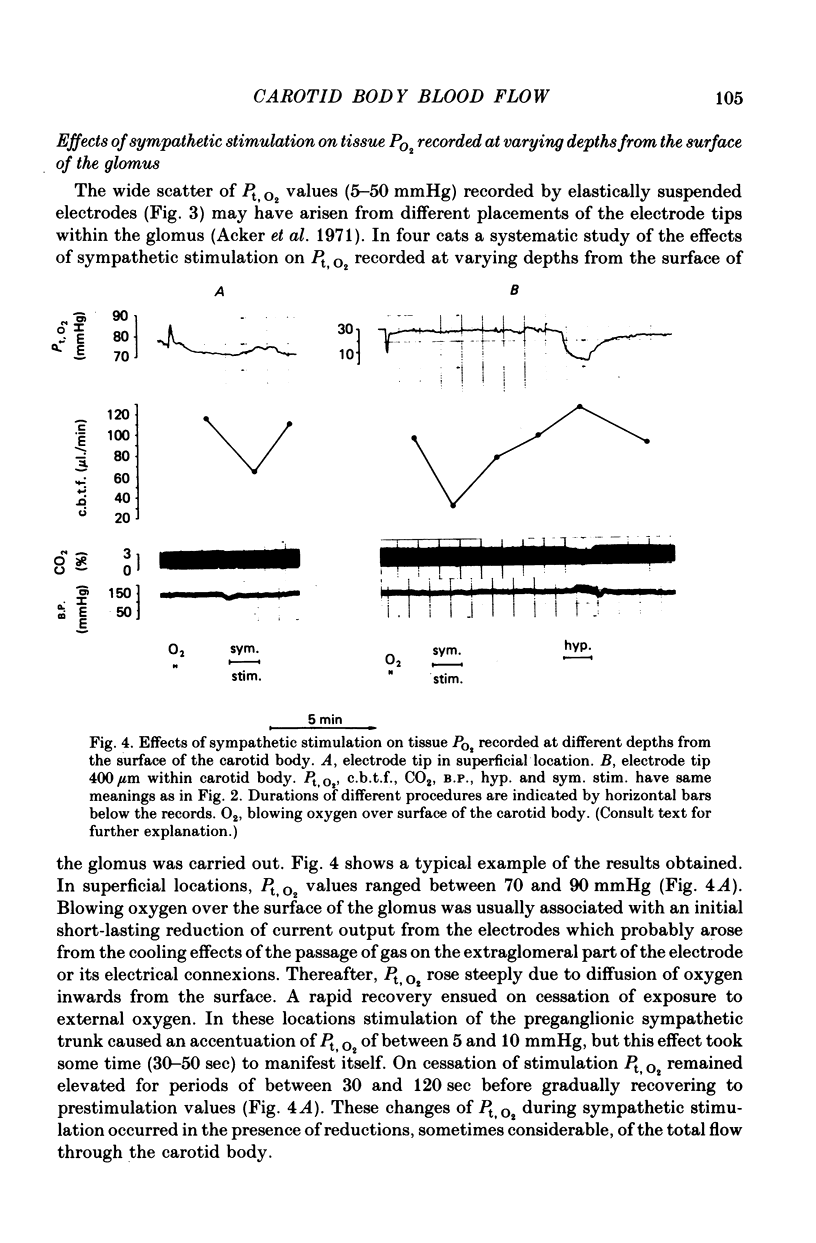
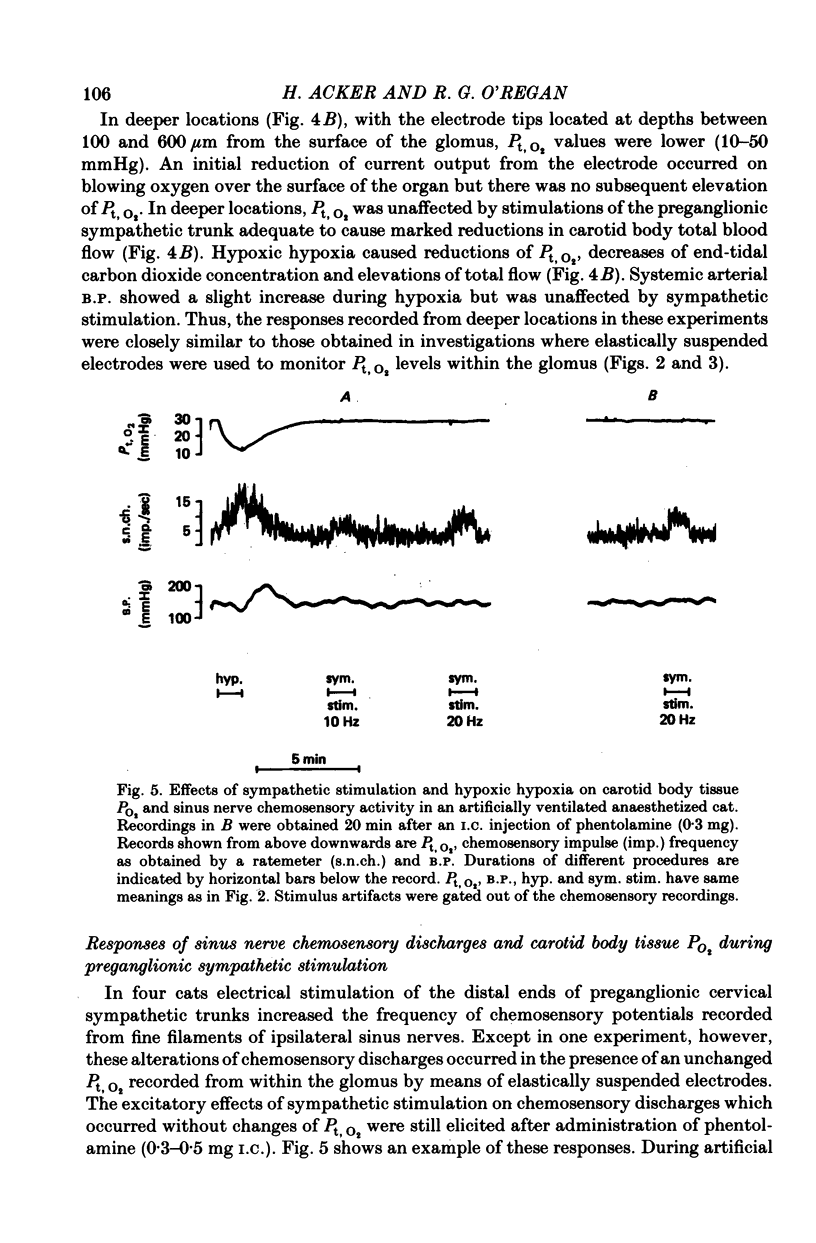

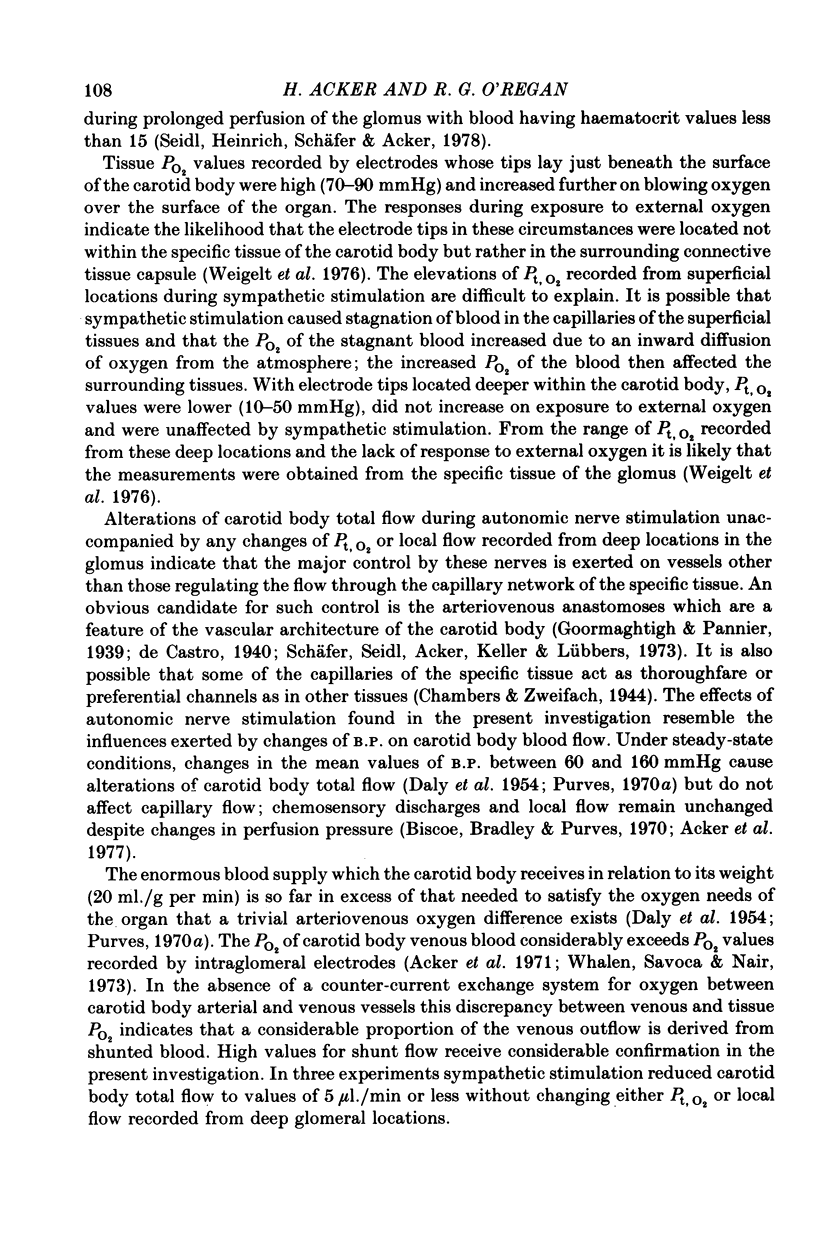
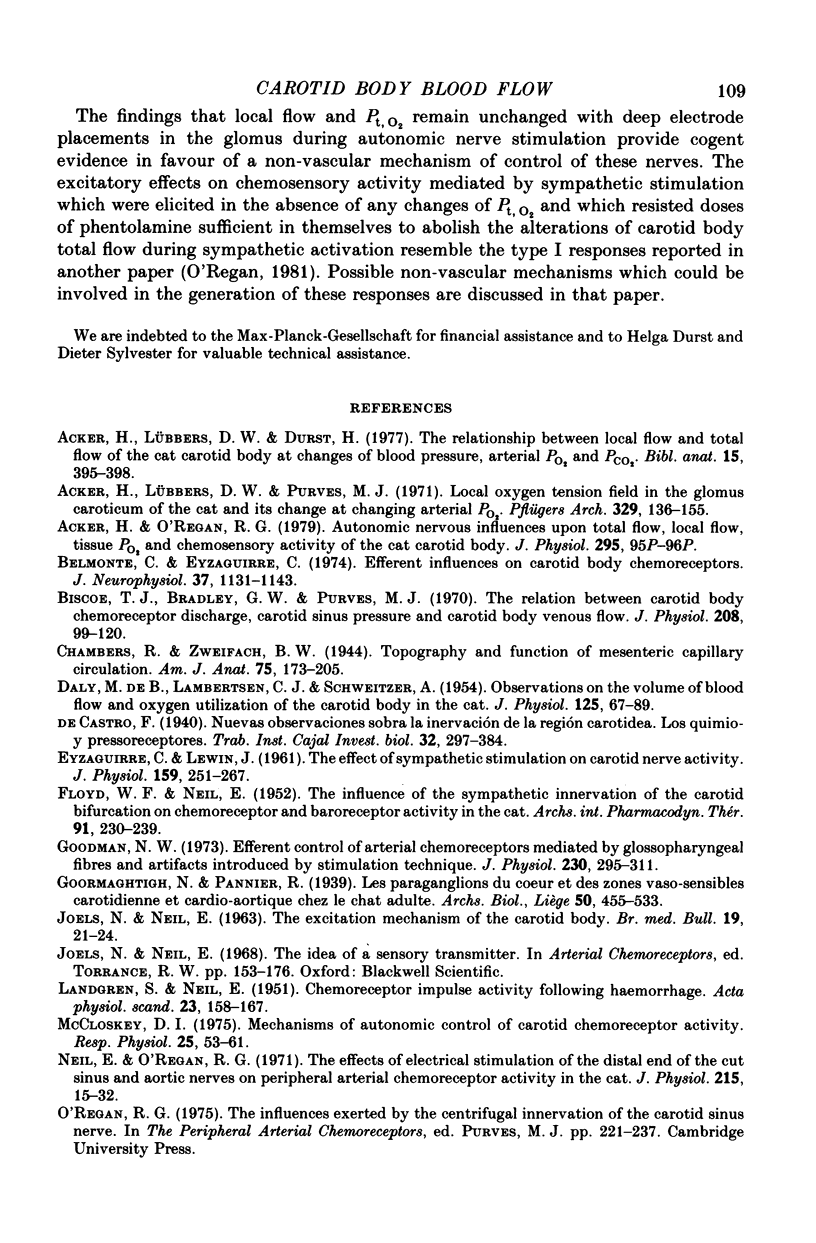

Selected References
These references are in PubMed. This may not be the complete list of references from this article.
- Acker H., Lübbers D. W., Durst H. The relationship between local flow and total flow of the cat carotid body at changes of blood pressure, arterial pO2 and pCO2. Bibl Anat. 1977;(15 Pt 1):395–398. [PubMed] [Google Scholar]
- Acker H., Lübbers D. W., Purves M. J. Local oxygen tension field in the glomus caroticum of the cat and its change at changing arterial PO 2 . Pflugers Arch. 1971;329(2):136–155. doi: 10.1007/BF00586988. [DOI] [PubMed] [Google Scholar]
- Acker H., O'Regan R. G. Autonomic nervous influences upon total flow, local flow, tissue PO2 and chemosensory activity of the cat carotid body [proceedings]. J Physiol. 1979 Oct;295:95P–96P. [PubMed] [Google Scholar]
- Belmonte C., Eyzaguirre C. Efferent influences on carotid body chemoreceptors. J Neurophysiol. 1974 Nov;37(6):1131–1143. doi: 10.1152/jn.1974.37.6.1131. [DOI] [PubMed] [Google Scholar]
- Biscoe T. J., Bradley G. W., Purves M. J. The relation between carotid body chemoreceptor discharge, carotid sinus pressure and carotid body venous flow. J Physiol. 1970 May;208(1):99–120. doi: 10.1113/jphysiol.1970.sp009108. [DOI] [PMC free article] [PubMed] [Google Scholar]
- DE BURGH DALY M., LAMBERTSEN C. J., SCHWEITZER A. Observations on the volume of blood flow and oxygen utilization of the carotid body in the cat. J Physiol. 1954 Jul 28;125(1):67–89. doi: 10.1113/jphysiol.1954.sp005143. [DOI] [PMC free article] [PubMed] [Google Scholar]
- EYZAGUIRRE C., LEWIN J. The effect of sympathetic stimulation on carotid nerve activity. J Physiol. 1961 Dec;159:251–267. doi: 10.1113/jphysiol.1961.sp006806. [DOI] [PMC free article] [PubMed] [Google Scholar]
- FLOYD W. F., NEIL E. The influence of the sympathetic innervation of the carotid bifurcation on chemoceptor and baroceptor activity in the cat. Arch Int Pharmacodyn Ther. 1952 Sep 1;91(1-2):230–239. [PubMed] [Google Scholar]
- Goodman N. W. Efferent control of arterial chemoreceptors mediated by glossopharyngeal fibres and artifacts introduced by stimulation techniques. J Physiol. 1973 Apr;230(2):295–311. doi: 10.1113/jphysiol.1973.sp010189. [DOI] [PMC free article] [PubMed] [Google Scholar]
- LANDGREN S., NEIL E. Chemoreceptor impulse activity following haemorrhage. Acta Physiol Scand. 1951 Aug 25;23(2-3):158–167. doi: 10.1111/j.1748-1716.1951.tb00805.x. [DOI] [PubMed] [Google Scholar]
- McCloskey D. I. Mechanisms of autonomic control of carotid chemoreceptor activity. Respir Physiol. 1975 Oct;25(1):53–61. doi: 10.1016/0034-5687(75)90050-x. [DOI] [PubMed] [Google Scholar]
- Neil E., O'Regan R. G. The effects of electrical stimulation of the distal end of the cut sinus and aortic nerves on peripheral arterial chemoreceptor activity in the cat. J Physiol. 1971 May;215(1):15–32. doi: 10.1113/jphysiol.1971.sp009455. [DOI] [PMC free article] [PubMed] [Google Scholar]
- O'Regan R. G. Oxygen usage of the cat carotid body perfused with cell-free solutions. Ir J Med Sci. 1979 Mar;148(3):69–77. [PubMed] [Google Scholar]
- O'Regan R. G. Responses of carotid body chemosensory activity and blood flow to stimulation of sympathetic nerves in the cat. J Physiol. 1981 Jun;315:81–98. doi: 10.1113/jphysiol.1981.sp013734. [DOI] [PMC free article] [PubMed] [Google Scholar]
- O'Regan R. G. Responses of the chemoreceptors of the cat carotid body perfused with cell-free solutions. Ir J Med Sci. 1979 Mar;148(3):78–85. [PubMed] [Google Scholar]
- Purves M. J. The effect of hypoxia, hypercapnia and hypotension upon carotid body blood flow and oxygen consumption in the cat. J Physiol. 1970 Aug;209(2):395–416. doi: 10.1113/jphysiol.1970.sp009171. [DOI] [PMC free article] [PubMed] [Google Scholar]
- Purves M. J. The role of the cervical sympathetic nerve in the regulation of oxygen consumption of the carotid body of the cat. J Physiol. 1970 Aug;209(2):417–431. doi: 10.1113/jphysiol.1970.sp009172. [DOI] [PMC free article] [PubMed] [Google Scholar]
- Sampson S. R. Mechanism of efferent inhibition of carotid body chemoreceptors in the cat. Brain Res. 1972 Oct 13;45(1):266–270. doi: 10.1016/0006-8993(72)90236-3. [DOI] [PubMed] [Google Scholar]
- Schäfer D., Seidl E., Acker H., Keller H. P., Lübbers D. W. Arteriovenous anastomoses in the cat carotid body. Z Zellforsch Mikrosk Anat. 1973;142(4):515–524. doi: 10.1007/BF00306712. [DOI] [PubMed] [Google Scholar]
- Weigelt H., Seidl E., Acker H., Lübbers D. W. The application of histological analysis for the localization of tissue PO2 and local blood flow with the example of the glomus caroticum of the rabbit (Oryctolagus cuniculus). Adv Exp Med Biol. 1976;75:17–23. doi: 10.1007/978-1-4684-3273-2_3. [DOI] [PubMed] [Google Scholar]
- Whalen W. J., Savoca J., Nair P. Oxygen tension measurements in carotid body of the cat. Am J Physiol. 1973 Oct;225(4):986–991. doi: 10.1152/ajplegacy.1973.225.4.986. [DOI] [PubMed] [Google Scholar]


